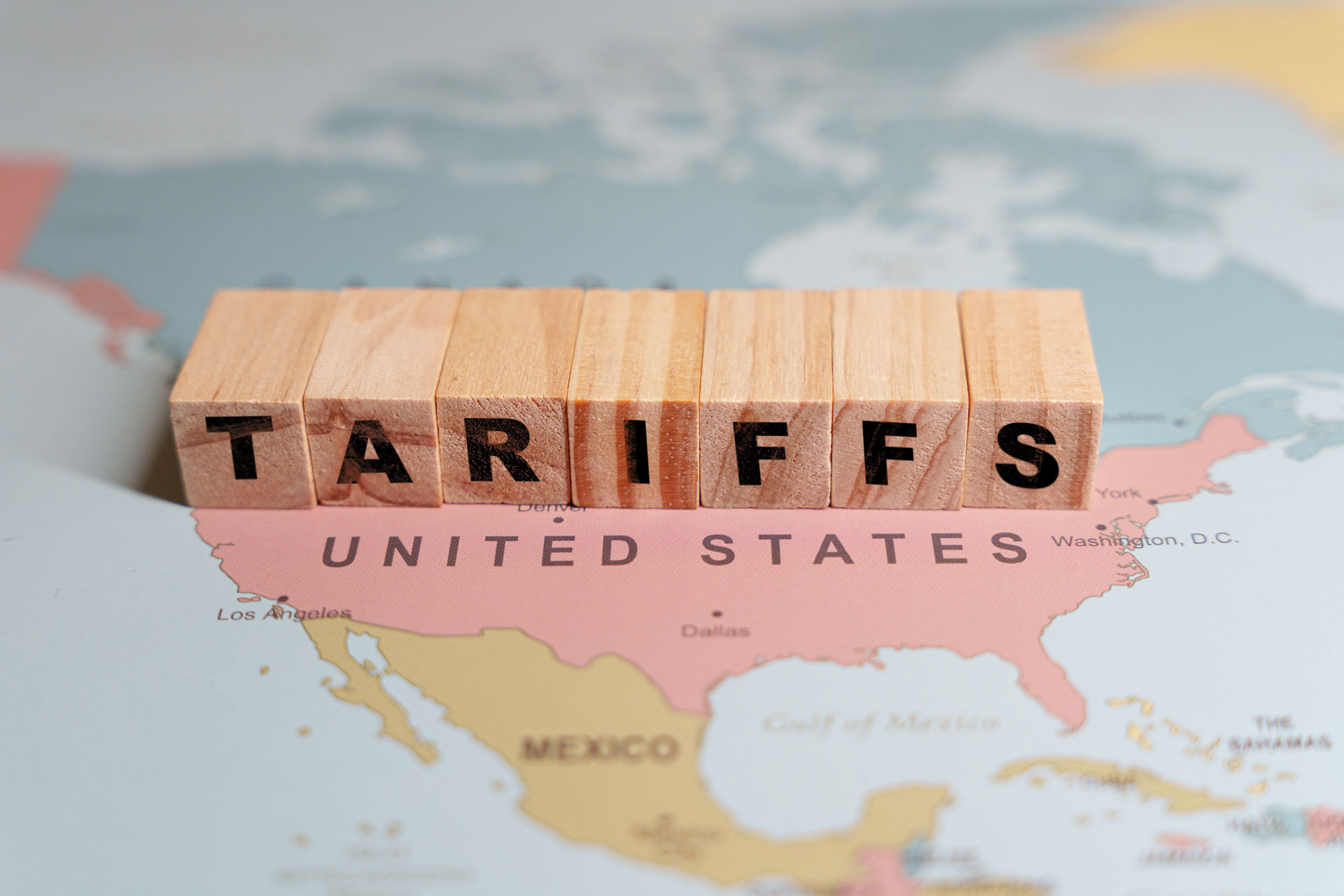
Our Business
External environment

Global economic outlook
In FY 2024/25, the global economy faced growing uncertainty driven by escalating geopolitical tensions, renewed trade protectionism led by the US, and tightening financial conditions across major markets. The Israel-Iran conflict and the prolonged Russia-Ukraine conflict continue to affect global supply chains and increased commodity price volatility. Additionally, aggressive tariff escalations by the US administration triggered retaliatory measures from China, Canada, and the EU, amplifying trade uncertainty and dampening global business sentiment.
Despite short-term resilience in the US and China, the Economist Intelligence Unit (EIU) projects global GDP growth to slow to 2.2% in 2025, down from 2.7% in 2024, marking the weakest performance since 2020. Diverging inflation trends, rising public debt, and constrained fiscal and monetary space in advanced economies continue to weigh on global investment, trade, and consumption.
Emerging markets faced a challenging environment of elevated US tariffs, a strengthening dollar, rising geopolitical risks, and reduced access to US led development finance and aid. However, countries rich in critical minerals or well-positioned as manufacturing alternatives to China are better placed to weather the storm.
Impact
One of the direct impacts of these developments was a reduction in the Fund’s contributions (approximately UGX 10Bn) from USAID-funded projects and entities. This decline arose from reduced remittances by both locally employed and expatriate staff from entities and projects supported by USAID.
Our response
The Fund has proactively implemented initiatives to expand its contribution base. These include recruiting more employers to onboard additional contributors, rolling out informal sector initiatives such as the livelihoods programme and the Smartlife product to capture both formal and informal voluntary savers, and strengthening collections to ensure sustained growth in contributions. In parallel, the Fund continues to diversify its investments and pursue strategies that safeguard and grow member value.
Regional overview, Kenya
According to the World Bank, Kenya's GDP grew by 4.7% in FY24, down from 5.7% in the previous year, as the economy faced challenges including floods, high interest rates, and subdued business sentiment following the 2024 protests. The industry sector slowed due to a weakening construction subsector, although manufacturing provided some cushion. The agricultural and service sectors remained strong, supported by good weather and lower inflation.
Inflation has remained firmly within the Central Bank’s 2.5%–7.5% target range, averaging around 3.5% in Q1 2025, and 3.8% in both May and June 2025. This moderation is attributed to a stronger Kenyan shilling, stable fuel prices, and earlier tightening of monetary policy including prior hikes in policy rates with policy rate cuts already ongoing as inflation remains subdued.
The Kenya Shilling remained relatively stable against major international and regional currencies. Usable foreign exchange reserves stood at USD 11.185 billion as at end of June 2025 according to CBK, equal to about 4.9 months of import cover, comfortably above the CBK’s statutory 4 months minimum. While appreciation pressures during 2024–2025 arose from Eurobond buyback, infrastructure bond inflows, and improved investor sentiment, underlying vulnerabilities remain, particularly a persistent current account deficit, high debt debt‐service obligations, and revenue shortfalls that threaten both fiscal and currency stability.
Impact
The Fund holds investments in Kenya in the form of Bonds and Equity stakes in listed entities. In FY2024/25, the UGX strengthened against the USD and the regional currencies, including the KES. This currency dynamic had an impact on the valuation of the Fund’s regionally held assets, impacting financial performance.
Our response
Kenya remains a key market for the Fund. To mitigate risks and capitalise on opportunities, we maintain close monitoring of the Kenyan economic landscape while implementing strategies that emphasise diversification across regions, sectors, and industries to enhance portfolio resilience. This approach enables us to navigate short-term volatilities while maintaining a long-term perspective.
Tanzania
Tanzania’s economy has maintained steady growth, expanding by 5.5% in 2024, up from 5.1% in 2023, according to the Bank of Tanzania. This growth is driven by public infrastructure investments particularly in railways, roads, airports, and sports facilities ahead of major tournaments such as the African Nations Championship (CHAN) and Africa Cup of Nations (AFCON) alongside stronger performance in agriculture, mining, and tourism. The government’s focus on large-scale projects and private sector engagement has been key to sustaining this momentum.
Inflation has remained stable and low, averaging 3.2% in Q2 2025, well within the Central Bank’s 3-5% target range. This stability is supported by prudent monetary policies, improved food supply from harvests, and exchange rate resilience. Risks to inflation remain contained, with no significant upward pressures expected in the near term.
The Tanzanian shilling has remained stable, with minimal depreciation risk, supported by a narrowing current account deficit (down to 2.6% of GDP in mid-2025 from 3.7% a year earlier). Foreign exchange reserves hit a record high of $6 billion in June 2025, supported by rising tourism receipts, gold exports, and crop sales. Additionally, the Bank of Tanzania’s Domestic Gold Purchase Programme and regulations promoting local currency use in domestic transactions, have further strengthened this position.
Impact on the Fund
Tanzania's relatively stable macroeconomic environment is a positive factor for the Fund. However, the strengthening of the Ugandan shilling (UGX) against the Tanzanian shilling had implications for the valuation of the Fund’s assets held in Tanzania, thereby affecting financial performance.
Our response
The Fund closely monitors the Tanzanian market, seeking to capitalise on emerging opportunities. A diversified investment approach and a long-term perspective are essential in navigating the market's challenges.
Local overview, Uganda
Uganda’s economy expanded by 6.3% in FY 2024/25, up from 6.1% the previous year, according to preliminary data from the Uganda Bureau of Statistics. This growth was driven by strong performance in agriculture, industry, and services, supported by higher agricultural output, increased foreign direct investment (particularly in the extractive sector), and strategic government programmes aimed at wealth creation. The anticipated start of oil production also contributed to economic optimism, positioning Uganda for further growth in the medium term.
Inflation remained low and stable, with headline inflation averaging 3.5% in FY 2024/25, while core inflation stood at 3.9%, well within the Bank of Uganda’s 5% target. This stability was attributed to prudent monetary policy coordination with fiscal measures, alongside favourable food supply conditions due to strong harvests.
The Ugandan shilling appreciated by 2.7% against the US dollar in FY 2024/25, with the average exchange rate strengthening from UGX 3,778.61/USD to UGX 3,676.21/USD according to the Ministry of Finance. This appreciation was driven by financial market reforms and increased inflows from coffee exports, remittances, and NGO activities, which bolstered the shilling and ensured sufficient dollar supply to meet corporate demand.
Impact on the Fund
Overall, the economic environment in FY2024/25 was conducive to business activity, providing stability that supported the Fund’s initiatives to expand social security coverage, including the Smart Life product. This stability, along with increased government domestic borrowing, which drove rising yields, also benefited from the Fund.
Our response
The Fund continues to closely monitor the local market while implementing targeted strategies to enhance portfolio performance, strengthen collections, and expand social security coverage. These efforts include recruiting new members and employers, promoting voluntary savings, and driving initiatives aimed at deepening financial inclusion, thereby safeguarding and growing member value.
Regulatory landscape
Following the amendment of the National Social Security Fund (Amendment) Act, 2021, now cited as the NSSF Act (Cap. 230), the National Social Security Fund (Voluntary Contributions and Benefits) Regulations, 2024, were issued during the year. These Regulations provided the legal framework enabling the Fund to create and rollout a voluntary savings.

Our response
In November 2024, the Fund launched Smartlife Flexi, a voluntary savings product designed to enhance social security coverage by offering flexibility in both contributions and withdrawals. Read more about this product here.
